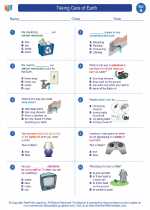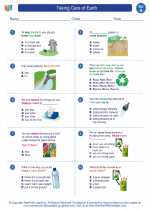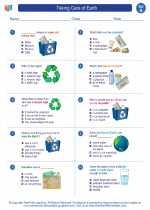The Ocean
An ocean is a large body of saltwater that covers over 70% of the Earth's surface. It is home to a wide variety of plant and animal life, and plays a crucial role in regulating the Earth's climate and weather patterns.
Ocean Zones
The ocean is divided into different zones based on depth and distance from the shore:
- Intertidal Zone: The area between high and low tide, where marine life must adapt to both wet and dry conditions.
- Open Ocean: The vast, deep part of the ocean where sunlight can penetrate, and where many of the ocean's largest creatures live.
- Deep Sea: The darkest and deepest part of the ocean, where unique and often bizarre creatures have adapted to survive in extreme conditions.
Ocean Currents
Ocean currents are large-scale movements of seawater that play a major role in shaping the Earth's climate and distributing heat around the globe. They can be driven by wind, temperature, and the rotation of the Earth.
Effects of Human Activity
Human activity, such as pollution, overfishing, and climate change, has had a significant impact on the health of the world's oceans. It is important for us to take steps to protect and preserve this vital ecosystem.
Study Guide Questions
- What percentage of the Earth's surface is covered by the ocean?
- What are the main zones of the ocean, and how do they differ?
- How do ocean currents influence global climate patterns?
- What are some ways that human activity has impacted the health of the world's oceans?
◂Science Worksheets and Study Guides First Grade. Taking Care of Earth
Study Guide Taking Care of Earth
Taking Care of Earth  Worksheet/Answer key
Worksheet/Answer key Taking Care of Earth
Taking Care of Earth  Worksheet/Answer key
Worksheet/Answer key Taking Care of Earth
Taking Care of Earth  Worksheet/Answer key
Worksheet/Answer key Taking Care of Earth
Taking Care of Earth  Vocabulary/Answer key
Vocabulary/Answer key Taking Care of Earth
Taking Care of Earth  Vocabulary/Answer key
Vocabulary/Answer key Taking Care of Earth
Taking Care of Earth 

 Worksheet/Answer key
Worksheet/Answer key
 Worksheet/Answer key
Worksheet/Answer key
 Worksheet/Answer key
Worksheet/Answer key
 Vocabulary/Answer key
Vocabulary/Answer key
 Vocabulary/Answer key
Vocabulary/Answer key

The resources above cover the following skills:
Concepts of Physical Science (SB1, SB2, SB3, SB4)
The student demonstrates an understanding of the structure and properties of matter by classifying matter according to physical properties (i.e., color, size, shape, weight, texture, flexibility).